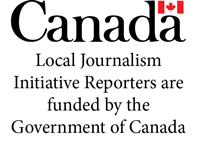A lot can be said about human courage and ambition, especially in the early days of aviation. You really couldn’t have one without the other in this realm.
By the time Amelia Earhart began flying in the early 1920s, you needed a great deal of courage just to board an aircraft of the era. While design and performance had improved considerably in just a few years since the biplane dogfights of the First World War, the next generation of aircraft still had a lot of bugs to be worked out. They were prone to mechanical failure and had limited range before refuelling was required; those aspects ever-present in the back of a pilot’s mind could not be comforting while several thousand feet in the air.
And so only 10 years and change removed from her very first flying lesson, Earhart put her ambition and courage on full display when she attempted the first trans-Atlantic flight by a female aviator in May 1932. Ninety years ago this past Friday, the 34-year-old pilot took off from Harbour Grace, Newfoundland, and set down in a farm pasture near Derry, Ireland 15 hours later. The flight was plagued by icy and precarious wind conditions, along with a variety of those afore-mentioned mechanical problems that were commonplace in those days, especially during longer flights. But she made it, and Earhart’s fame skyrocketed from then on. Her importance as a pivotal female personality in a field largely dominated by men could not be understated.
I’ve had the privilege of seeing Earhart’s Lockheed Vega 5B on display at the National Air and Space Museum in Washington, D.C. about 20 years ago. It’s a strange sensation to be in the same room as so many important pieces of history – record-setting aircraft, NASA space vehicles, and scores of others – after years of simply just reading about them or seeing them in grainy television documentaries.
Anything associated with Earhart has an eerie mystique to it, and no doubt it has to do with her untimely fate five years after landing in that Irish cow pasture. The fact that she was one of the world’s most renowned pilots, was in her prime, and was attempting a flight that only a handful had before her, and certainly no other woman before her, all added to the lore surrounding this extraordinary woman.
To this day, still no one knows exactly what became of Earhart and navigator Fred Noonan while they were completing a particularly dangerous leg of the global circumnavigation over the Pacific Ocean. The pair departed Lae, New Guinea in Earhart’s modified Lockheed Electra on the morning of July 2, 1937, and they were never seen again. Final communications with a U.S. Coast Guard cutter in the vicinity of a spit of land in the middle of the Pacific known as Howland Island indicated that the plane was precariously low on fuel, and was no doubt forced to ditch in the ocean.
After an extensive search revealed nothing to indicate survivors, Earhart and Noonan were officially declared dead in early 1939. Stories circulated that they had possibly made a crash landing on a couple other tiny islands or atolls in the area, but there was no evidence to support those theories. I suppose people just had a hard time accepting the fact that one of the world’s most renowned pilots had been lost.
Later investigations revealed that poor planning and navigational error were the most likely causes of Earhart and Noonan disappearance. Speculations that the plane wasn’t properly fuelled to capacity in New Guinea would have been disastrous considering the endless ocean to cross and the necessity for every drop of fuel available.
It’s just yet another historically-tragic example of a shining star being taken far too soon. Regardless of Earhart’s untimely death just shy of her 40th birthday, she did inspire future generations of female pilots and significantly helped the progression of women in society as a whole. And while her accomplishments in the air during her life were significant, it’s that aspect of inspiration through her own courage and ambition that remains her true legacy.
Thanks for reading and I’ll see you back here in a fortnight.
***
This is a bi-weekly opinion column; for question or comment contact Dan McNee at dmcnee@midwesternnewspapers.com.



